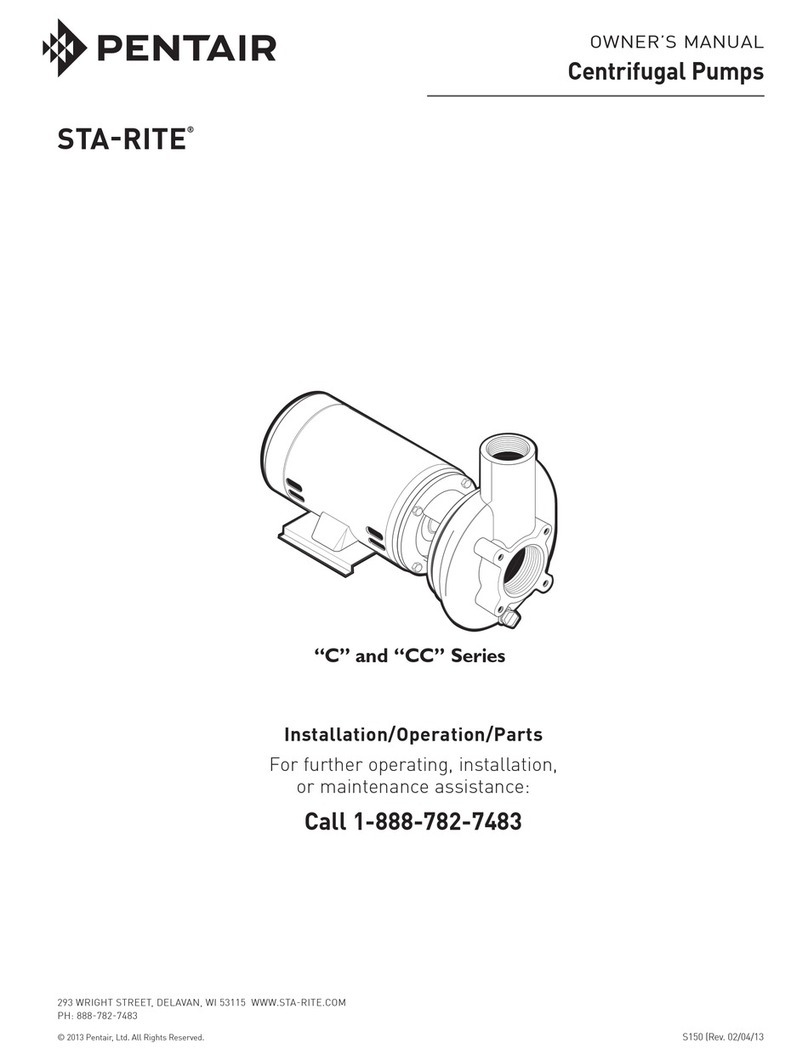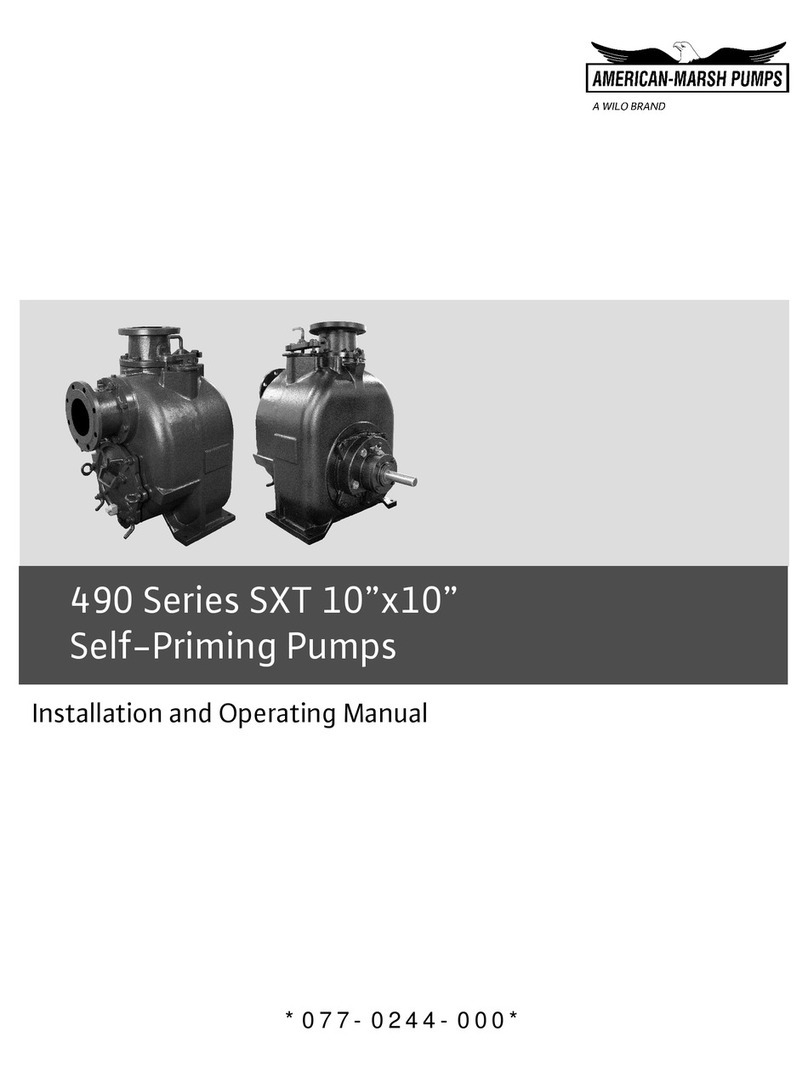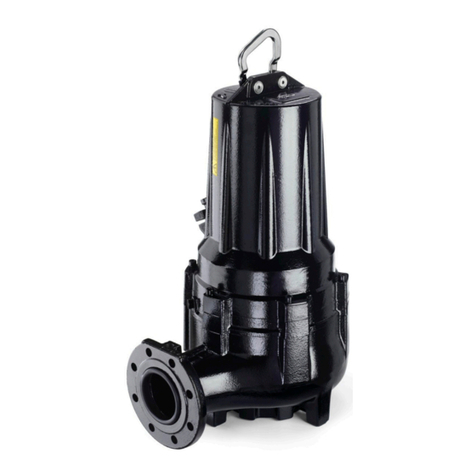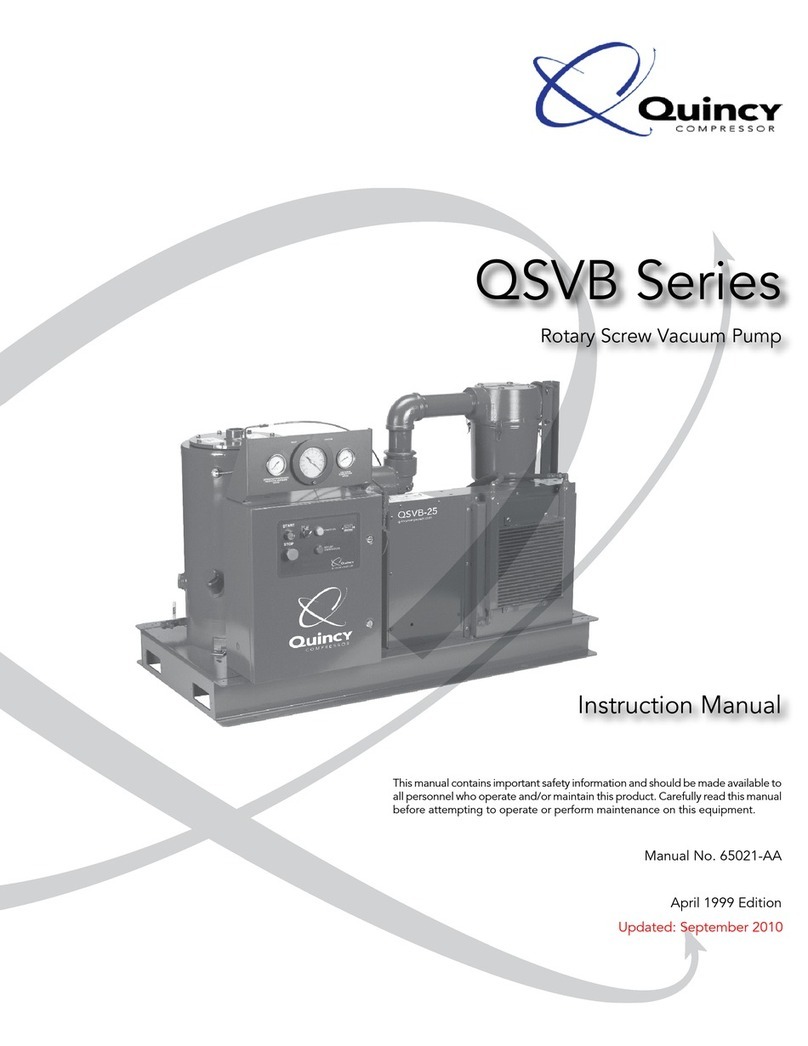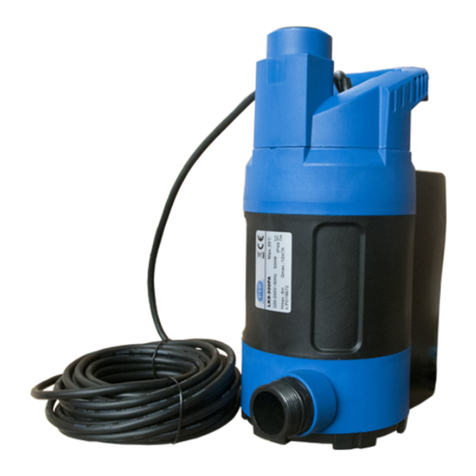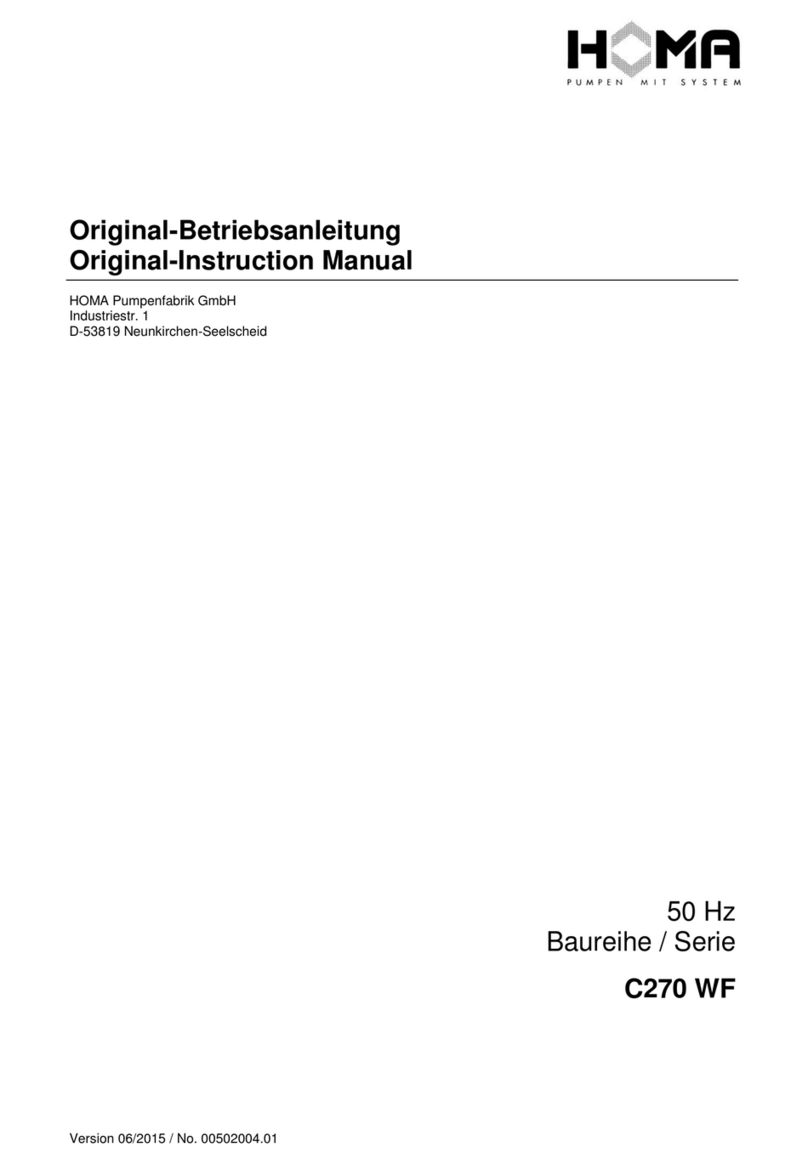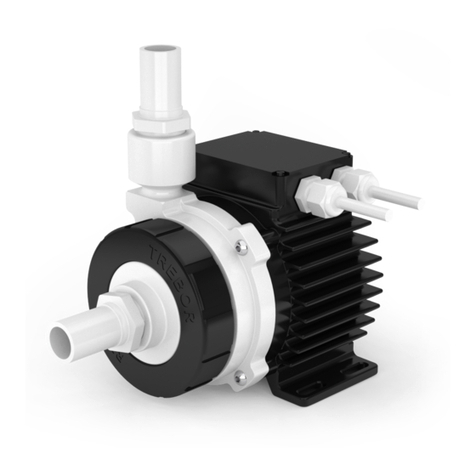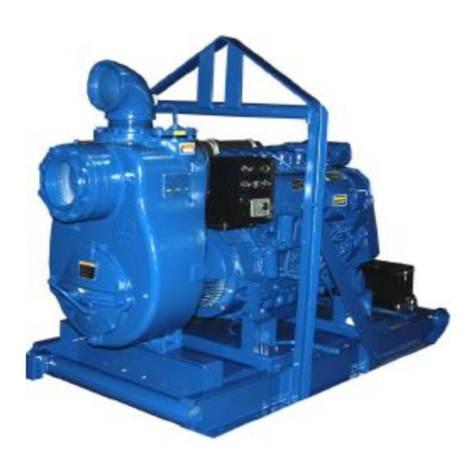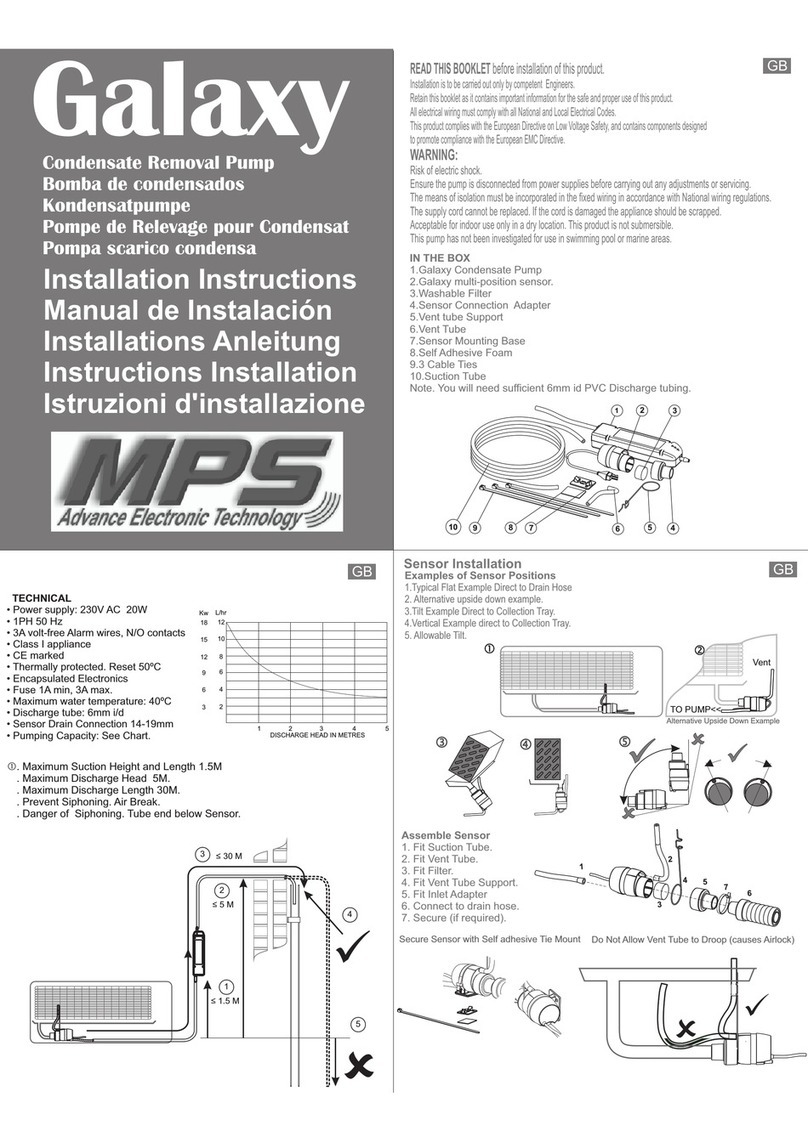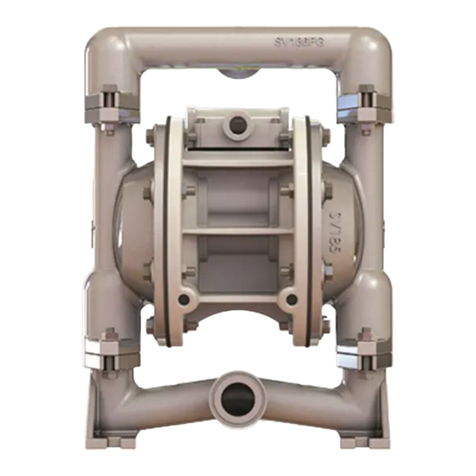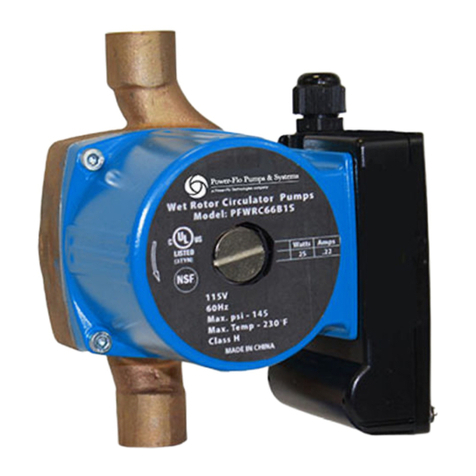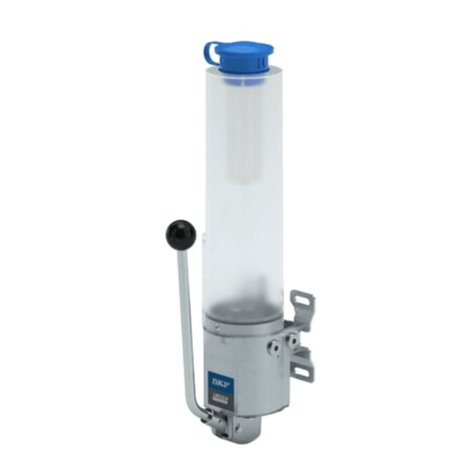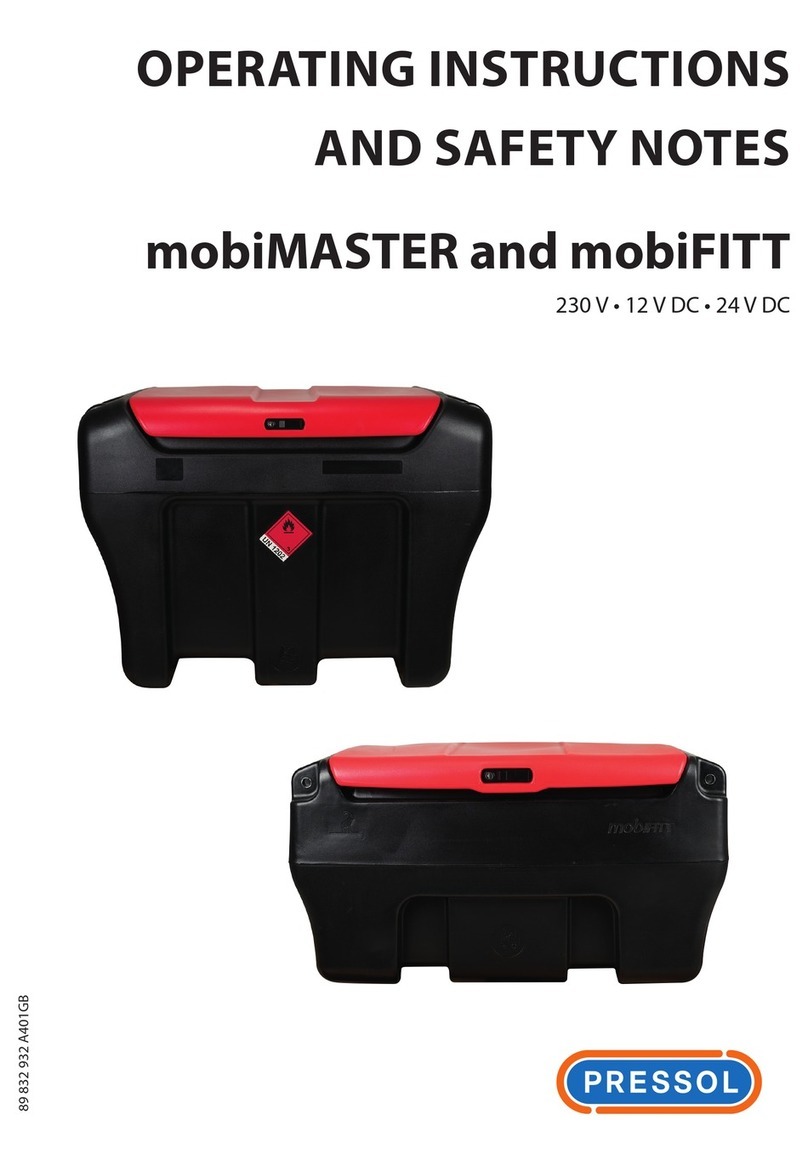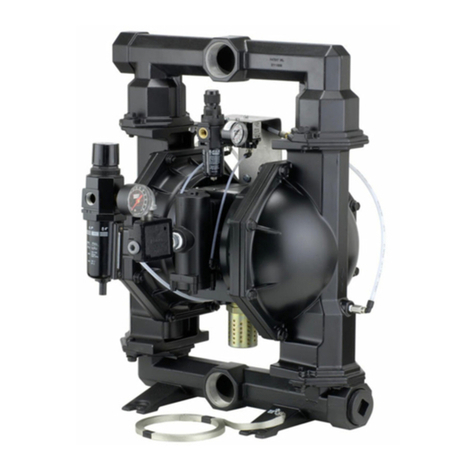
5
US/CAN
3.7.3 Option of connection to an external alarm
Option of externalizing the alarm signal (depending on the model). Dry
contact (no voltage) NO (normally open) operated by a max. 250V/16A relay.
The terminals can be connected to a powered system.
This contact closes as soon as the station is in alarm mode (except in the case
of area alarm) and remains closed as long as the alarm sounds.
External alarm
Max. 250 V / 16A Dry contact
NO
3.8 Sump tank
The sump tank is designed for pressure-free operation. Wastewater is collec-
ted there at atmospheric pressure before being discharged to the sewer.The
ventilation duct allows the tank to always remain at atmospheric pressure
3.9 Pumped uids
Pumping unauthorized uids
Dangerous for people and the environment!
w
Only discharge authorized pumped uids in the public sewerage
network
Authorized pumped uids:
The following liquids are allowed in discharge systems:
Water contaminated by domestic use, human excrement.
Unauthorized pumped uids:
The following liquids and substances are banned:
• Solid materials, bres, tar, sand, cement, ash, coarse paper, hand towels,
wipes, cardboard, rubble, rubbish, slaughterhouse waste, oils, greases,
etc.
• Wastewater containing harmful substances (for example, untreated
greasy waste from restaurants). Pumping these liquids and substances
requires the tting of a compliant grease trap.
• Rain water.
3.10 Noise level
The noise level depends on the tting conditions and operating point. This
sound pressure level Lp is less than 68 dB (A).
4INSTALLATION / FITTING
4.1 Installing the pumping station
• The characteristics shown on the rating plate have been compared with
those on the order and installation (supply voltage, frequency).
• The installation room must be protected against frost.
• The installation room is adequately lit.
• The work has been prepared in accordance with the dimensions shown in
the example installation.
• The plant room where the SANICUBIC® will be installed must be large
enough to allow a 24 in clearance around and above the device to facilitate
maintenance.
• The alarm signal is always visible to the user (if necessary, use an external
alarm contact switch).
• Isolating valves (not provided) must be tted on the euent inlet as well as
on the discharge line, as close as possible to the pumping station.
• The discharge line must be designed to prevent any back-ow of sewage.
By tting a non-return loop, located above the back-ow level, back-ow is
avoided.
Comment: In the absence of local information to the contrary, the maximum
back ow level corresponds to street level - roadway, pavements etc. Extend
this line after the non-return loop through a larger diameter pipe.
• The installation of an auxiliary pump for possible drainage of the plant room
(for oods) is recommended.
• The pumping station must be ventilated above the roof.
• The pumped uid is appropriate and authorized by this documentation.
(section 3.9)
• In case of discharge of greasy euents, the use of a degreasing tank is
essential.
Wastewater other than those mentioned above, for example, of artisanal or
industrial origin, must not be discharged into the pipes without prior treat-
ment.
4.2 Electrical connection
Electrical connection work performed by an unqualied indivi-
dual. Risk of death by electric shock!
wThe electrical connection must be performed by a qualied
and licensed electrician.
wThe electrical installation must meet the current standards in
the country
Wrong supply voltage. Damage to the pumping station!
wThe supply voltage must not dier by more than 6% of the
rated voltage specied on the rating plate.
The power supply must be class 1. The device must be connected to an
earthed junction box. The electrical power supply must be protected with a
high sensitivity circuit breaker set to 10 Mini Amps for SANICUBIC® 1 and 20
Mini Amps for SANICUBIC® 2.This connection must be used exclusively for the
SANICUBIC® power supply. If the cord of this device is damaged, it must be
replaced with original equipment manufacturer parts by a qualied licensed
electrician.
4.3 Fitting the pumping station
Fit the pumping station on the bare ground and level it with a bubble level.
To avoid any risk of the pumping station oating, attach it to the ground
using the mounting kit provided.
NOTE
Fitting the pumping station on anti-vibration mounts ensures
sucient insulation against structure-borne sound with respect
to the pumping station. Do not t the pumping station in direct
contact with the walls to avoid transmission of the pumping
station’s vibrations
4.4 Pipe connections
4.4.1 Inlet pipes
w The pumping station must not be used as a control point
for piping.
wProp up the pipes upstream from the pumping station.
Make connections without constraints.
wUse suitable means to compensate for thermal expansion
of the piping.
NOTE
It is recommended that you mount check valves and isolating
valves on the inlet pipes.These must be mounted so that they do
not hinder disassembly of the pumping station.
✓ The piping is supported.
1. Choose the connection openings to use.
2. Cut the tip of the corresponding inlet with a saw.





















